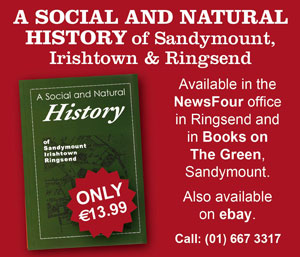By Liam Cahill
As children we all become accustomed to receiving toys that transport us into an alternative universe where rules, and parents, don’t reside. Within this world the social barriers of everyday society also breakaway, leaving children who were once on differing sides of class and economic structure on a more equal playing field. Toys offer our children escapism, there’s no doubt, but are they also able to predict where a child lies within society?
Society takes on an interesting form when Christmas time presents itself. We get closer to those we love, and we have a new sense of forgiveness for those who annoyed us throughout the year. We do everything in our power to ensure Santa will give our kids the best and most expensive toys on the market. If affording that toy wasn’t feasible, does that suggest that you come from a deprived society?
“It’s not the toy itself; it’s the social life that goes on around that toy,” says Associate Professor Dr. Barbara Bradby at the School of Social Sciences and Philosophy (Sociology) in Trinity College. Dr. Bradby pointed out that during a conversation in one of her classes, students discussed how parents may be becoming increasingly worried about their children being left out of important conversations concerning the most popular toy.
As a child, this exclusion could lead one to ponder his/her mere importance and possibly question their socioeconomic upbringing at a later point. In increasingly financial volatile times, the attainability of expensive toys may be hard to achieve or indeed become a struggle.
According to Associate Prof. Jane Kuenz of the University of Southern Maine in her extensive report on children and society Playtime: Toys and the Labor of Childhood, the author suggests when toy stores present children with expensive toy options they “…obscure the unequal social relations required to produce and consume them.”
Other authors, including Els Rommes at Radboud University in the Netherlands, points to societal and gender reasoning behind children and toys. The examination asserts that toys can be “structurally gendered” when they “refer to professions or locations within society where more men, or women, are found.” In most cases, societal factors don’t appear to be the determining factor in the production and selling of games. Other factors, such as the gender of the child, tend to play a more pivotal role.
In fact, according to the research by Rommes, toy manufacturers didn’t believe toys made much of a difference in the upbringing of children. Regardless of where you are from, middle, lower, or upper class the detriment against big spending is pretty much universal- the CSO Consumer Price Index was up 1.2 percent in October 2012 compared to the same time the previous year. Yes, we are strapped for cash, but can this be a deciding factor if our children receive expensive toys at Christmas.
As a child growing up in Ballyfermot, we were aware we had no money. Remarkably this didn’t seem to halt the range of expensive toys we got at Christmas. The most prominent memory was of what toys we got, compared to what we could have. There was always however, one child who had more than you, but certainly you didn’t think it was a societal factor.
Professor Kuenz’s study suggests parents shift from caring about solely the well being of their children to focusing on the “psychological and moral development” of them. In this regard, regardless of a socioeconomic background, parents will deliver on the promises of big toys due to “guilt and nostalgia.” In this instance, social and financial barriers seem to break away and we enter a more psychological reasoning behind why children receive certain toys. Could it be the case, that some parents buy toys merely because they didn’t get them?
It’s hard to tell; certainly from discussions I’ve had with some parents this seems to be one factor. For now, there doesn’t seem to be a societal factor in determining what toys your child will receive.
</h5?toys>



